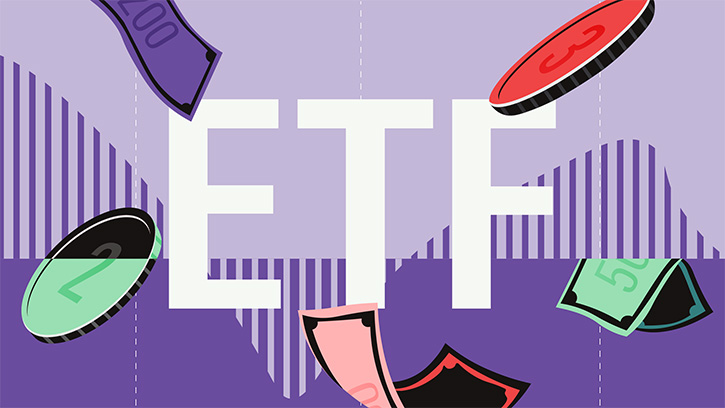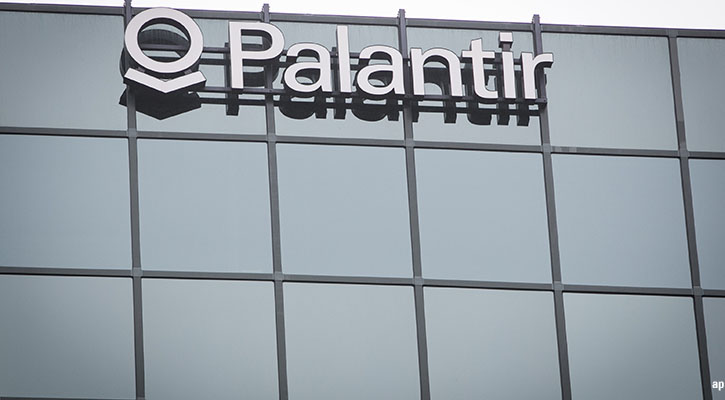A "Perspectives" article from Fidelity Worldwide Investment.
Summary
For the third time in five years, the world is braced for another food crisis as the worst US drought in 50 years pushes some agricultural commodity prices, such as corn and soybeans, to record highs. Aside from the unfavourable weather conditions that have disrupted supply, there are some important long-term factors at play on the demand side, which imply a growing susceptibility to supply-side shocks.
Here, we take a look at the likely short term economic effects of the current food price spike and the long-term prospects for food in the context of a growing global population, dietary changes in developing economies, and declining arable land. We also consider some potential investment beneficiaries as companies globally respond to these challenges.
The Latest Food Price Spike
The latest spike in food prices seems to be following an increasingly familiar pattern. In 2008, a spike in the price of many of the world’s agricultural staples triggered riots across the developing world as the UN admitted that more than a billion people were hungry. In 2010, failed crops and an export embargo in Russia sent cereal prices spiralling again. This year, the blame is being attached to America’s worst drought in half a century and environmental “food for fuel” legislation that ensures the bio-fuels industry eats first. The short term drivers might be different on each occasion but the results are the same: the global food supply is now highly susceptible to shocks.
The prices of corn and soybeans recently exceeded the highs reached in 2008. Meanwhile, the wheat price has surged by over 40% between the start of June 2012 to late July 2012, taking it close to its 2008 record highs. Only rice, where supplies are plentiful, has bucked the trend.
Notably, unlike four years ago, when there appeared to be a significant speculative element to the price rises, today’s crisis appears to be a genuine supply problem.
The rise in corn and soya bean prices is particularly damaging because both items are the main ingredients in animal feed for cattle, pigs and chicken, meaning a very high likelihood of follow-through price rises for meat and meat products. This explains why US livestock and poultry producers have been at the forefront in demanding that the US Environmental Protection Agency suspends the Renewable Fuel Standard - the congressional mandate that requires more than 13 billion gallons of corn oil to be used in transportation fuel in 2012.
Short-Term Implications
The recent rise in agricultural commodity prices could not be occurring at a worse time for the global economy with the eurozone sovereign debt crisis still in full flow, China slowing down and the US outlook looking increasingly uncertain. The biggest direct negative effect of higher food prices is on consumers, particularly in emerging markets. As consumers are forced to spend more on food items, discretionary spending is reduced in other areas, creating negative knock-on demand effects for other industries.
The other notable impact of higher food prices is in the monetary policy sphere. As food prices rise, this tends to put upward pressure on the general level of prices (particularly in developing countries where food items make up a larger proportion of the CPI basket). This tends to make it harder for central banks to cut interest rates to support the economy or to undertake quantitative easing programmes.
The European Central Bank (ECB), which recently cut its main refinancing rate to 0.75%, is widely expected to follow this up with at least one further cut. However, any signs of resurging inflationary pressure could curtail its ability to provide further support to the ailing euro-land economy. That said, the weak eurozone economy means demand-push inflation is weak and moderating, which should cancel out any upward pressure from food price rises. In fact, with many of the western economies struggling with deflationary debt dynamics, the impact of food price hikes is likely to be most keenly felt in emerging market economies.
Commentators regularly talk about ‘energy politics’ when discussing oil resources. In the 2008 food crisis, the economics (and politics) of food took on huge importance, becoming an issue that became more socially and politically sensitive than oil, at least for a short time. The social unrest caused by the these price spikes lives long in the memory of many governments, especially those of developing countries where food makes up a far larger part of total spending. For example, in the US, food has a 14% weighting in the CPI basket. In China, the figure is a whopping 33%. Food inflation, therefore, quickly manifests itself in overall inflation in developing economies, raising the political stakes and potentially leading to de-stabilising unrest.
Long-Term Drivers: The World Needs More Food ... From Less Land
The World Bank estimates that demand for food will rise by 50% by 2030, largely as a result of population growth, rising affluence and changing diets. The population of the world is growing at around 1% per year. It might not sound much, but it means an additional 70 million mouths to feed every single year. The overwhelming catalyst for this population growth is coming from the developing world.
This population explosion poses a serious challenge for food production, particularly when you consider that the amount of arable land in the world has been reduced consistently in recent years due to industrialisation and urbanisation.
Changing Diets and the Meat Multiplier
With a growing number of mouths to feed yet declining arable land, the fundamentals already point to the need to increase crop yields. However, changing diets in the developing world and regulations that encourage the use of crops for bio fuels are exacerbating the pressures on food supply.
Economic growth and rising affluence in developing countries, such as China, India and Brazil, is allowing huge numbers of people to improve their diets by adding more protein, namely meat and dairy products, which is pushing up the prices of these items. For example, we have been seeing sustained increases in demand from Asia and the Middle East for beef and lamb.
The demand for more protein has a significant knock-on impact on grain demand. Livestock is reared on grain-feed, making production heavily resource intensive. Indeed, it takes 7 kilograms of grain to produce just 1 kilogram of meat. As demand for meat rises, this increases the demand for and prices of feedstock - these increased costs of productions flow back to the consumers in the form of higher meat prices. Adding to the upward pressure on feedstock price and much to the dislike of livestock farmers, have been US environmental regulations (the Renewable Fuel Standard) that require a proportion of corn crops be used for the production of bio-fuel.
More Food from Less Land Implies One Thing: Fertiliser
The most obvious and efficient way to meet increasing demand is to increase crop yields by using fertilisers. Much of the arable land in the developing world is inefficient and significant gains in yields can be achieved via the use of fertilisers. Higher commodity prices mean that farmers are making healthy profits and can afford to buy fertilisers. The demand for, and the price of, fertiliser therefore looks likely to grow strongly over the next decade and beyond.
During the 2007-08 food price spike, for example, it was notable that the cost of fertiliser commodities such as urea and potash rose around tenfold. While the financial crisis saw prices fall back sharply, demand is now back and is expected to challenge capacity in coming years; it takes around seven years to develop a new potash operation. We are therefore likely to see both healthy profits as well as more consolidation among the fertiliser companies, a feature that has been accelerated recently by the interest of large mining groups in the fertiliser market.
A number of stocks can be expected to benefit from the world’s growing need for food. Fertiliser stocks are one of the most direct beneficiaries of the need to increase crop yields. Stocks such as Potash Corp. (POT), Uralkali (URKA) and Mosaic (MOS) outperformed significantly during the last episode of food inflation, when many of the themes discussed here first caught investors’ attention. Valuations are now more reasonable yet the long-term fundamentals remain very attractive.
A Range of Beneficiaries, But Stock Selection is Key
As we move along the food supply chain, stock selection is critical to identify the winners and losers. A rising food price can mean bumper profits for a commodity producer but increased costs for a food processer. Many food companies, such as Kellogg (K), now hedge their input costs, having learned from earlier crises.
As mentioned earlier, rising incomes and the expansion of the middle class in fast–growing emerging economies is causing structural changes in diets as consumers move from generally healthy, low calorie diets that are high in grains and vegetables to higher-calorie, Western style diets that tend to contain more meat and dairy. A good example of a stock that derives strength from themes of changing consumer habits and increasing wealth in emerging markets is Shenguan Holdings (00829), China’s dominant sausage casing manufacturer.
Lastly, one might expect supermarkets to lose out from higher food prices. However, those with significant buying power and leading market positions, such as Tesco (TSCO), have the ability to pass on more of the price rises to consumers.
The Future of Food: Some Interesting Developments...
We Could See a “Green Revolution”: Emerging markets, particularly China and India, will be incentivised to lead a second “green revolution”, with significant potential gains also achievable in sub-Saharan Africa. Increases in market prices will stimulate developments to increase arable land and irrigation projects. This could help to dampen volatility and stabilise the supply side. In the next 25 years, we should expect significant increases in African grain yields.
Precision Agriculture: We can expect to see the development of something called “precision agriculture” over the next decade. This involves the integration of satellite observations, on-the-ground instruments and sophisticated farm machinery to apply the optimum amounts of seed, water and fertiliser for maximum efficiency.
Biotechnology and ‘GM’ Crops: Although the majority of genetically modified (GM) crops are grown in North America, there has been rapid growth in GM cropland in developing countries, particularly Brazil and Argentina and, increasingly, India and China. (However, European production has been held back by a more stringent EU authorisation regime as well as some cultural resistance on the part of consumers.) The next decade could see great progress in GM product development as researchers gain increasing access to genomic resources. Future GM developments could see drugs incorporated into foods; for instance, bananas that produce vaccines against infectious diseases such as hepatitis B. We could also see metabolically-engineered fish that mature more quickly, fruit and nut trees that yield earlier, as well as foods that lack the properties associated with intolerances.
“Fast food” from Animal Cells: Scientists have found a way to create artificial meat by delivering an electric charge to the animal muscle cells in a mixture of amino acids, which causes the cells to multiply. Although this is currently a very expensive way to produce a piece of pork, it offers the potential to feed millions of people cheaply in the future in a resource-efficient manner. Given the predicted growth in meat consumption in developing countries and the incredibly resource-intensive nature of production, this may become an environmentally acceptable option as pressures intensify and ‘traditional’ meat becomes more and more expensive.
Of course, it’s important to remember that new technologies can bring new threats. When it comes to GM foods, the big concern is biodiversity. Given human dependence on a small proportion of plant and animal species for our diets, genetic diversity within these species is crucial. Historically, improvements to crops and livestock have been localised. However, as the agricultural business becomes more global and the key players become larger, we might see less variety in our farmed crops and livestock.
Conclusion
Increasingly unusual weather patterns affecting supply and the growing global population, combined with changing preferences on the demand side, strongly suggest that that the food crises of the past few years are likely to be recurring events. As the United Nations has repeatedly cautioned, we can expect generally higher food prices going forward. How the world responds to these issues will be an important theme. Investors can potentially profit off of these trends by investing in and providing capital to those companies that help to address these important challenges.
This article is part of Morningstar's "Perspectives" series, which is a series of articles written by third-party contributors. The views contained herein are those of the author(s) and not necessarily those of Morningstar. If you are interested in Morningstar featuring your content on our website, please email submissions to UKEditorial@morningstar.com.



























